Growing strawberries in pipes horizontally
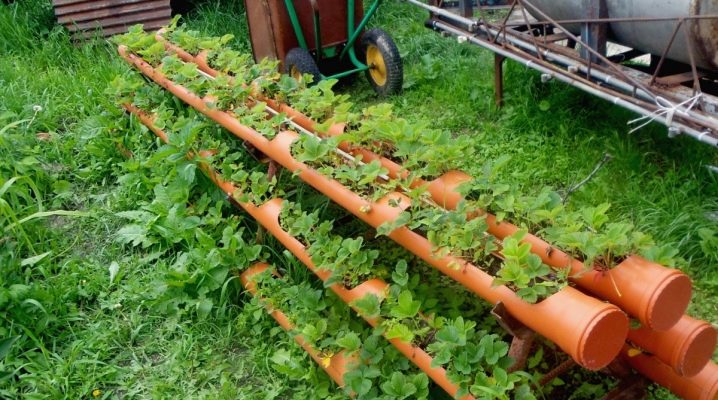
Strawberries are a favorite treat for children and adults. The owners of summer cottages and country houses plant it even in the smallest areas, coming up with various devices for this. Beds placed in horizontal pipes solve the problem of confined spaces. In the article we will tell you how you can design them yourself, how to plant strawberries in them, and how to care for them.
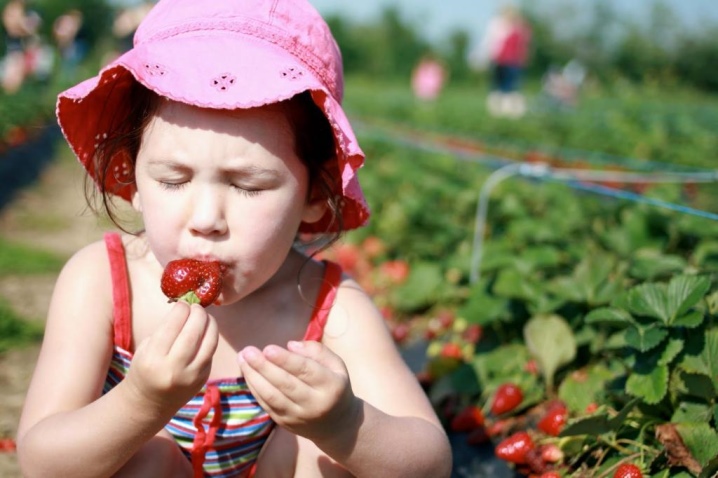
Peculiarities
Strawberries can be grown in PVC pipes by placing them horizontally or vertically on the plot. The arrangement will vary. Let's consider horizontal beds in more detail. They can be made from any plastic pipes of a suitable diameter, but mainly sewer polypropylene options are used.
Holes are made in the pipes into which the seedlings are planted. But first, the structure is prepared: an irrigation system, drainage is installed, the soil is filled up, and only then the bushes are planted. Some gardeners, instead of individual holes, cut off the entire upper part of the pipes, and use them for general planting of seedlings.
If not one pipe is used, but a whole structure, a base is built under it. The frame on which the plastic beds are attached must be strong and reliable, because one two-meter pipe with earth, drainage and seedlings will weigh at least 20 kg, and if there are 4-5 of them, then the weight will increase to 100 kg or more.
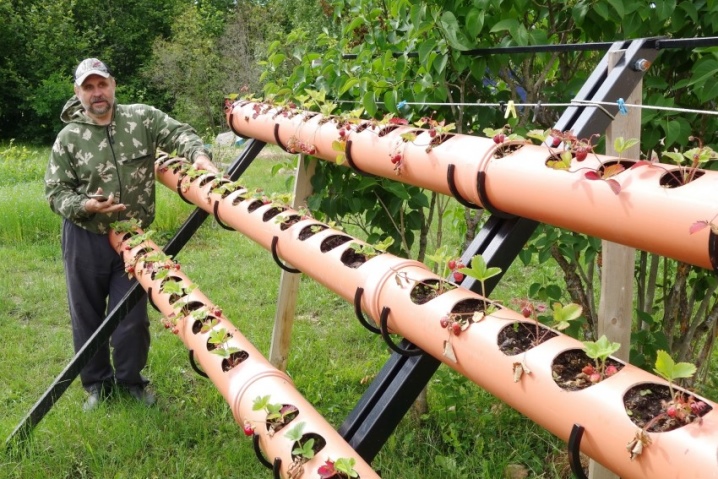
Instead of a frame, you can use the wall of a barn, garage or any other building. Pipes are fixed on it, hanging them in a row one above one. We suggest that you familiarize yourself with a selection of different ways to install beds in pipes on a site.
-
The pipes are laid parallel to each other on the ground... This method is used in a greenhouse, greenhouse and in an open space. The beds may not even be in the garden zone, but in the yard, decorating it with beautiful strawberry plantations.
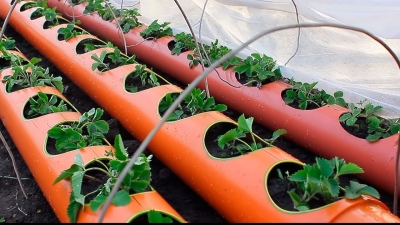
- Pipes are placed on the frame with a ladder, downhill. So they are easy to care for and each garden bed gets enough light.
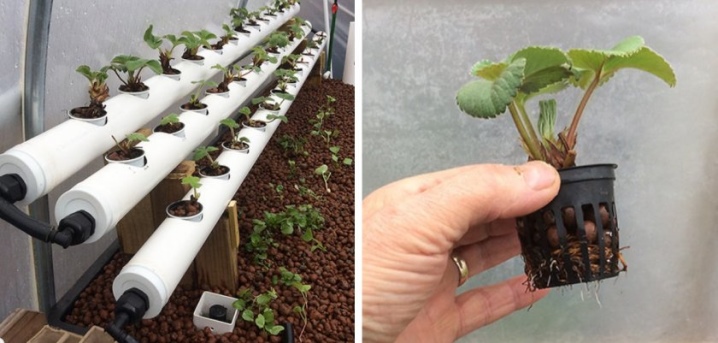
- Flower beds located one above the other, are installed on multi-tiered structures. To increase stability, they are fixed to the wall.

- Light pipes do not need additional supports, they are fixed to the wall surface with corners, each individually.
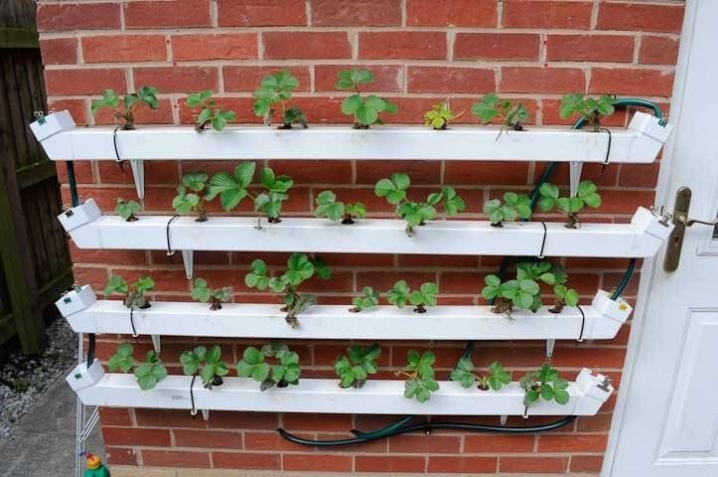
- It is rational to use a frame that holds pipes in the form of a slide. This design will take up little space, but will provide good yields.
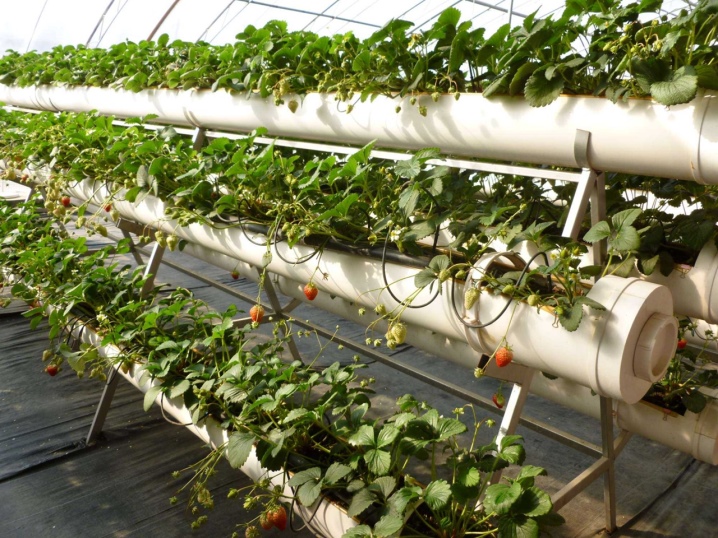
- With the help of pipes no more than a meter long, you can equip convenient portable beds... The design allows you to hide strawberries from frost by bringing them into the barn.

To understand why strawberries are grown in pipes, let's talk about the benefits of this method.
-
Pipes with an equal amount of planting material take up much less space than a soil bed.
-
Flowerbeds are installed not only in the garden, but also in the yard, on the territory of outbuildings and in any other convenient place.
-
Mobile beds have the ability to move anywhere. In the cold season, they can be brought into a shed or greenhouse, creating favorable conditions for an all-season harvest.
-
You can reduce the cost of the structure from the beds if you construct it from old, waste material or scraps after pipe repair.
-
It is easier to care for strawberries located above the ground, you will not need to bend over for hours.
-
The berries collected from plastic beds are not dirty even in bad weather, since they do not lie on the ground.
-
Strawberries, raised to a safe distance, will not harm small children, walking chickens and pets.
-
The land is well cultivated before planting and, without contact with the general soil, weeds do not start in the pipes, slugs and other insects do not attack.
-
For the same reason, strawberries do not actually get sick, provided that healthy seedlings are planted.
-
Beautiful aesthetic pipe constructions with green mass, flowers and berries can become an organic decor for the local area.

The method of growing strawberries in pipes also has disadvantages, they should be known in order to have a complete understanding of the features of this type of technology.
-
Before the pipes turn into beds, they need to be purchased, which means they need to be spent. Then make a structure, the construction of which will take a lot of time.
-
The soil in the pipes does not have contact with the soil on the site, it dries out quickly and is depleted, so frequent watering and periodic top dressing are required.
-
Plants isolated in the space of pipes are afraid of frost, their roots freeze easily. In the cold season, the structure will need thermal insulation.
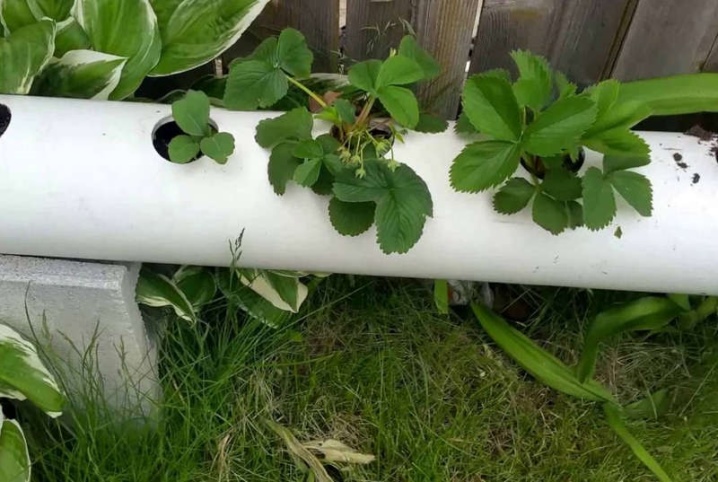
Suitable varieties
Not all strawberries will be able to grow in beds that are torn off from the general soil layer. For species with a powerful rhizome, such conditions are not suitable. To harvest a high yield from pipe beds, strawberries must meet the following requirements:
-
have good frost resistance;
-
tolerance for dry conditions;
-
easy to adapt to tube growing;
-
bear fruit throughout the warm season, that is, remontant varieties are more suitable;
-
have excellent taste;
-
great appearance.
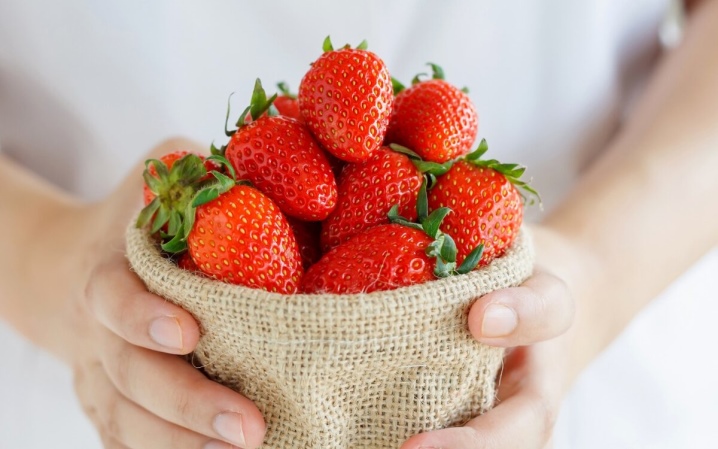
Plants recommended for growing in containers or horizontal tubes meet these requirements.
-
"Baby elephant". A medium-ripening variety, produced in Russia, has an excellent taste. Not afraid of cold and drought, withstands different climatic conditions.
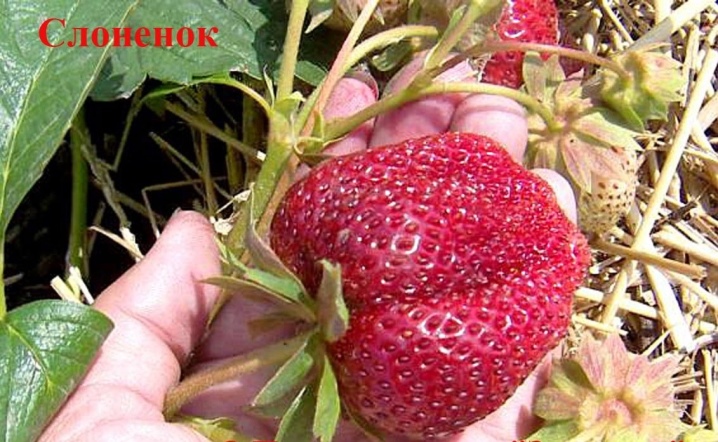
- "Albion"... Has proven itself well when grown in tubes. The variety is not capricious, resistant to diseases, with a pleasant taste and pronounced aroma.
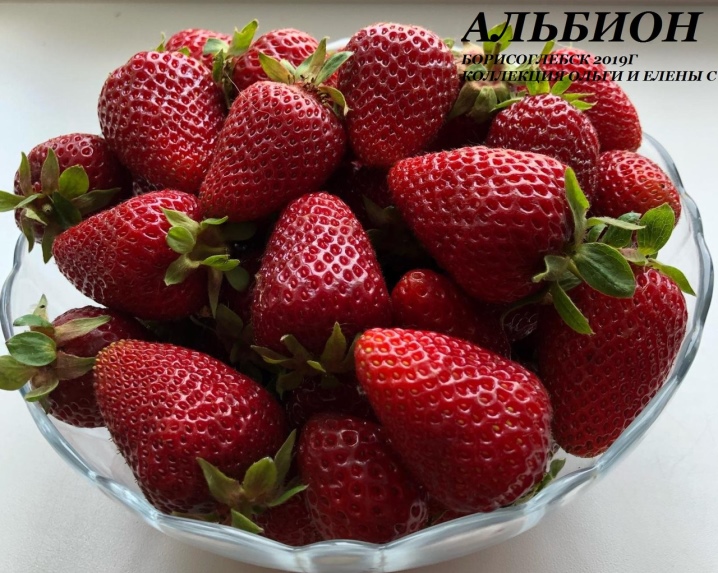
- "Honey"... This type of strawberry was developed in the USA in the 70s of the XX century. It belongs to very early varieties, has large berries weighing up to 27-30 g with a beautiful dark glossy color. The berries have an exceptionally pleasant taste and tolerate transportation well.
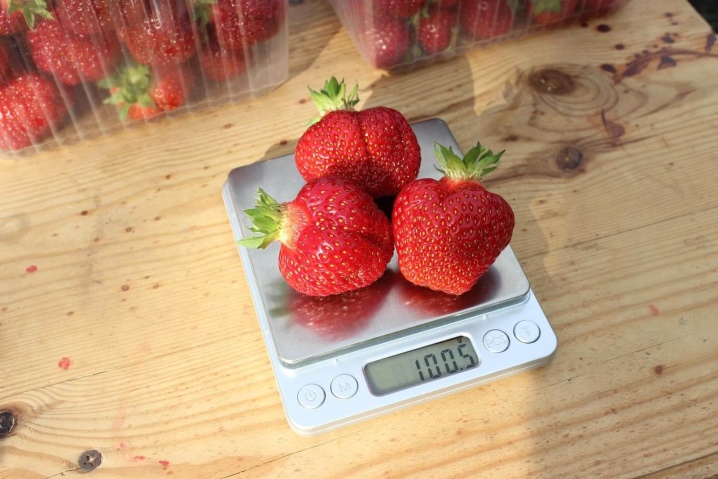
- "Geneva". Another American variety. Possesses a high yield, shows excellent taste qualities.

- "Queen Elizabeth"... Differs in wonderful taste and spectacular appearance, it can be used to decorate the yard. Refers to remontant varieties.
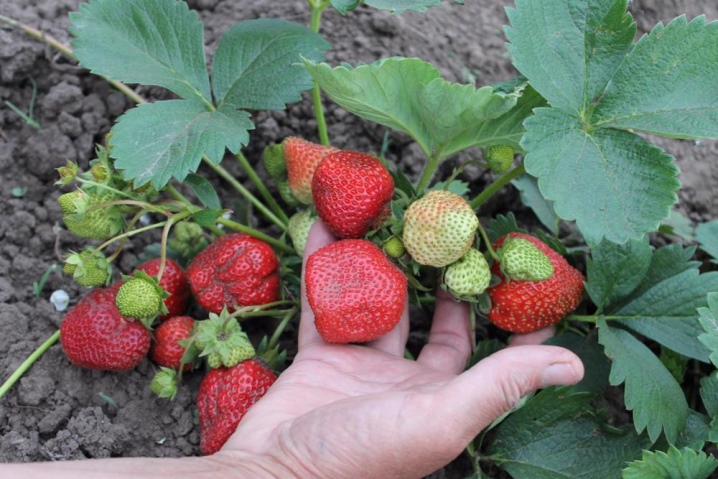
- Alba. A variety from Italy with weaving stems, frost-resistant, unpretentious. The berries are large, juicy, bright, with a good taste, do not become shallow throughout the entire fruiting.

- "Elvira"... The berries are large (up to 60 g), have a deep red color. The bushes give a high yield (up to 2 kg per season).
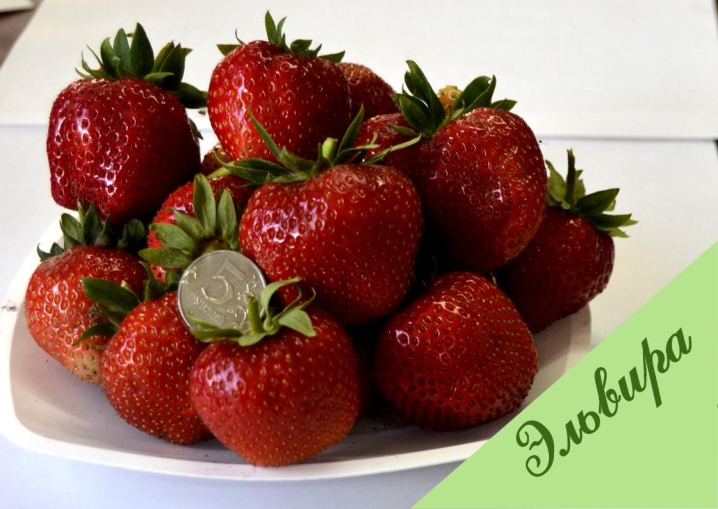
- "Gigantella Maxim". Collect up to 1.5 kg of berries from one bush. The fruits are giant, flattened, can reach a weight of 100 g.
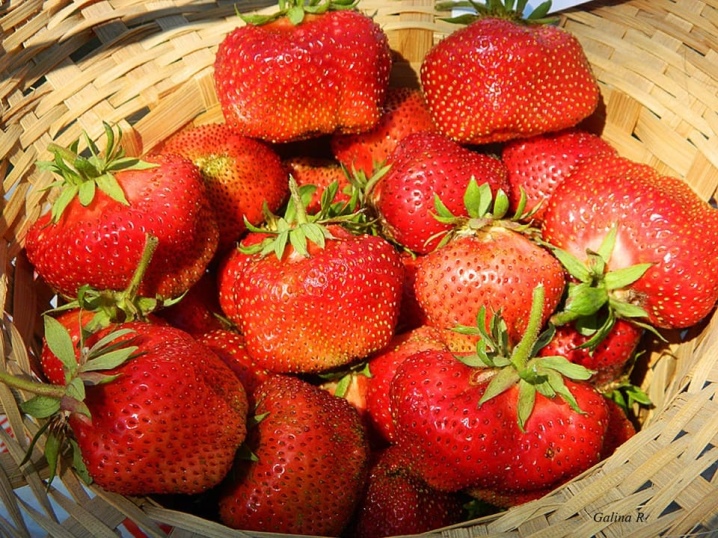
- "Everest"... A bright red variety with a good sweet and sour taste, a wonderful aroma, gives 1 kg of yield per bush.
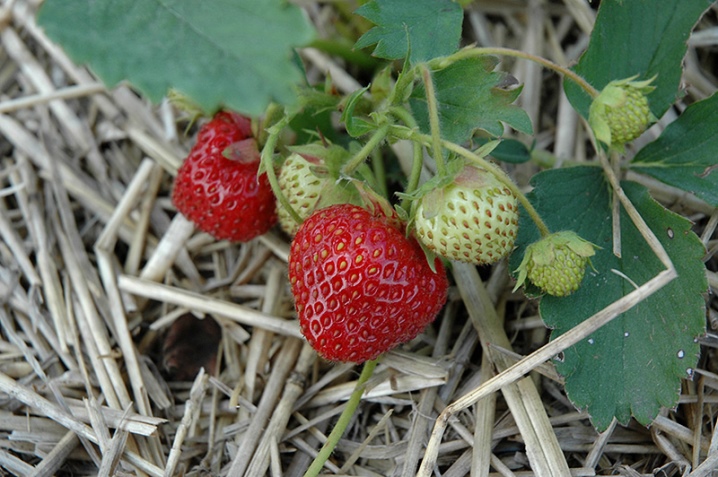
Requirements for conditions
To grow strawberries in pipes, the following conditions must be met:
-
install beds in a well-lit place;
-
seedlings should be planted on a warm cloudy evening;
-
strawberries take root well at a temperature of + 18 ... 20 degrees;
-
the soil must have a weak acidity;
-
plant varieties should be selected according to climatic region and recommendations for planting in pipes.

Creation of a structure
Before you start tinkering with the beds in containers, you need to find a place for them and prepare it. Sewer pipes made of polypropylene are most often chosen as the material. Their diameter can be 15-30 cm.
The beds are rarely arranged in one pipe, more often they make up a whole complex... For its manufacture, you will need a supporting structure diagram and the material itself - metal or wood.It should be remembered that the weight of a two-meter pipe when fully filled with soil and seedlings is 25 kg.
If we multiply it by the number of planned pipes, we get the total mass of the complex. This will make it possible to understand how strong the supports and fasteners of the structure should be.
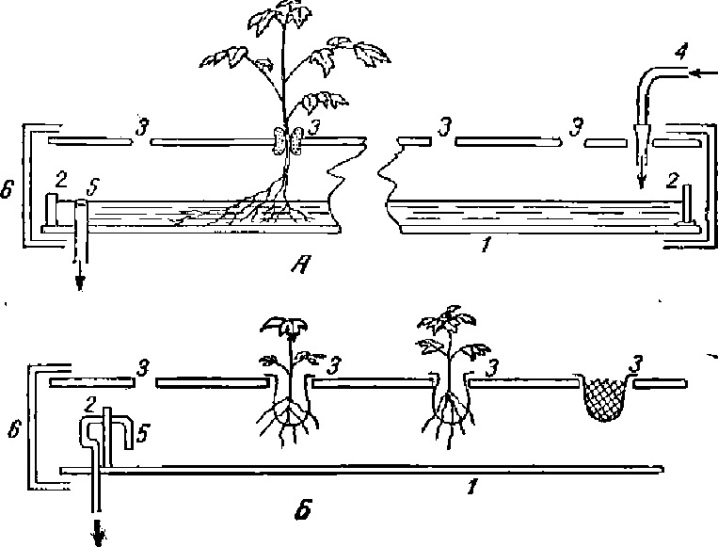
Tools and materials
Prepare working tools, pipes and support materials in advance, so as not to interrupt work in search of the necessary parts.... For the construction of the beds, we need:
-
pipes 1-2 m long and 15-30 cm in diameter;
-
thin irrigation pipe 1.5-3 cm thick;
-
geotextile;
-
wire or strong twine;
-
plugs for a thick pipe;
-
pebbles or expanded clay for drainage;
-
prepared planting soil;
-
frame material;
-
jigsaw or drill with a circular nozzle;
-
fasteners.

Construction
The production of horizontal beds in plastic pipes is carried out in the following way.
-
On the drawing, they sketch out a diagram of the structure, choose the size of the pipes. Then holes are marked on the surface of the product with a step indicated in the diagram. For horizontal flower beds, they are made in one row.
-
Holes are cut out according to the marking with a jigsaw. The diameter of the holes should be 10-15 cm, and the distance between them should be 13-17 cm.
-
Small slots are made in two plugs for the thickness of the irrigation pipe.
-
A thin irrigation pipe should be 10 cm longer than a thick pipe. To make it suitable for drip irrigation, many small through holes are made on the surface.
-
Then the entire length of the product is wrapped in a non-synthetic building fabric, wrapped with a cord or wire. The fabric will keep the small holes from clogging up with soil and, while being saturated with moisture, will promote uniform irrigation.
-
Expanded clay, pebbles, or other drainage, 1-2 cm high, are poured through the holes at the bottom of a large pipe (along the entire length).
-
A thin irrigation pipe is placed in a wide product and secured with plugs on both sides.
-
Then, on top of the irrigation system, through the holes, the structure is filled with prepared, fed and disinfected soil. The soil is lightly tamped and watered.
-
From both ends of the structure, they connect to a thin irrigation pipe through a hose - on the one hand for irrigation, and on the other, to drain excess moisture. Next, a pump is used. But you can water in another way: just install a tank of water over the garden bed and connect the hose.
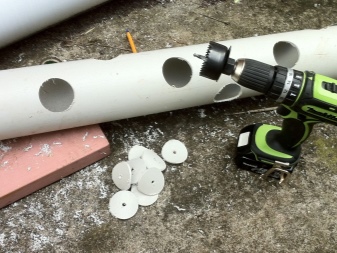
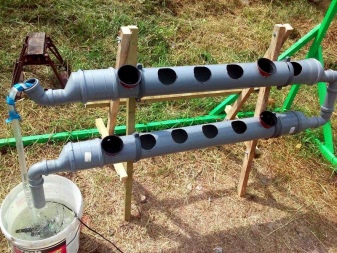
The design can be made cheaper and not connected to a drip system, but to water the garden by hand. Then, at the bottom of a large pipe, even before it is filled with drainage and soil, you need to make many small holes. Excess moisture will go through them after watering.
Landing
Before planting seedlings, already prepared soil is poured into the pipes; for strawberries it should be slightly acidic. For disinfection, in order to kill the fungus and insect larvae, the soil is poured over with boiling water and dried. You can use special antiseptic chemicals.
Before planting, the plants can be kept in a growth stimulant solution, but you can not do this, but simply plant the seedlings with a clod of earth in which they were planted.
In the soil (in the holes), you need to make depressions, water them slightly, lower the seedlings, sprinkle them with earth and tamp them a little. It is important to remember that, in addition to the leaves, a heart must remain on the surface of the soil, otherwise the seedlings will die. When the strawberries are planted, they should be watered.
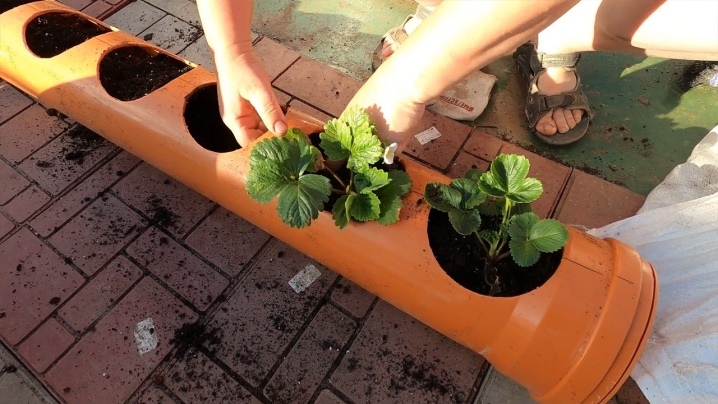
Care
In order to grow a good harvest, strawberries are handled in pipes in a specific way.
-
Watering... Depending on the drying out of the soil, about once every 4-5 days.
-
Top dressing... Biological fertilizers and microelements are carried out 1-2 times a month.
-
Wintering... The pipes are wrapped separately, and then the entire structure together with agrofibre. Portable beds can be brought indoors.
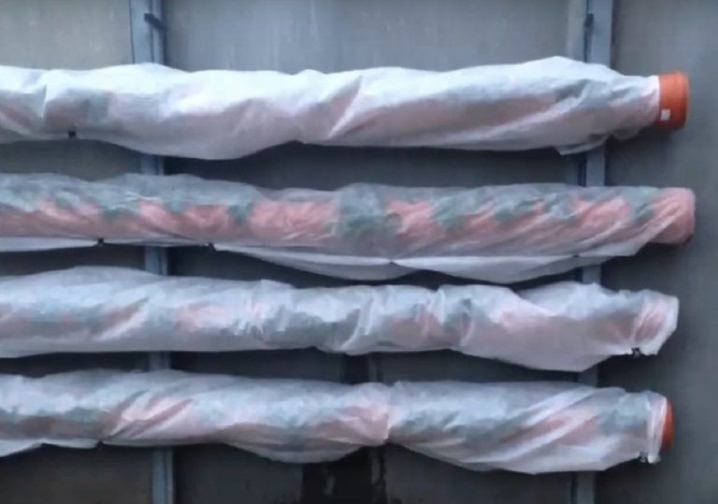













The comment was sent successfully.